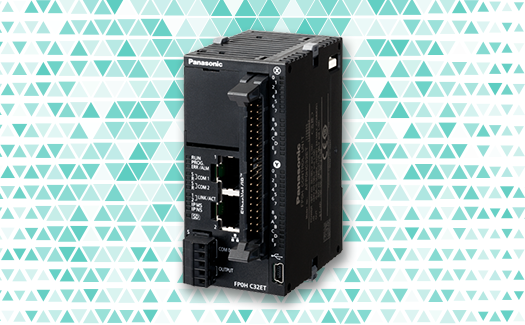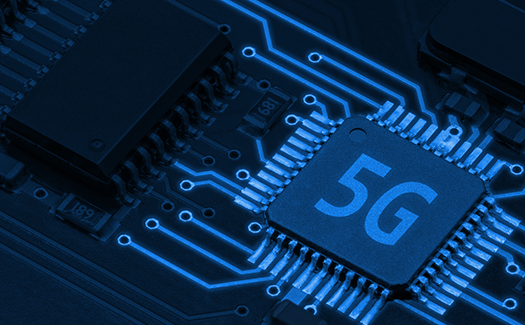
Implementation of the New IEC 61010-2-201 Standard For The PLC Market
Published on- Relays & Contactors
Automation is playing a key role in manufacturing industries to help reduce production costs, increase efficiency in production, improve product quality, etc. New methods of system integration are being adopted worldwide that enable manufacturers to efficiently manage their day-to-day activities effortlessly. However, the integration of these numerous and diverse technologies requires a high degree of interconnectivity that significantly complicates the design. The lack of universal standards and the slow pace at which the existing standards are revised to address new technologies can be considered major factors for complicating the design.
Background of New Requirement Development
The International Electromechanical Commission (IEC) IEC 61131-2, Programmable controllers Part-2 Equipment requirements and tests, has provided the primary technical requirements for PLCs in the European Union (EU) and in many other countries around the world. However, the U.S. and Canada were following UL508, CSA-C22.2 NO.142 as their standards. Although the technical requirements of the U.S. and Canadian PLC standards were generally consistent with each other, they differed significantly from IEC 61131-2. The key differences were found in creepage & clearance distances, required protection types and the classification of loads. Example: HP rating vs.AC-3, or pilot duty rating vs AC1. These technical differences created a major contrast in unifying the PLC requirements across the globe.
The International Electromechanical Commission (IEC) took a major initiative from 2011 onwards to address these concerns and came up with a revised standard to address every automated system designers, especially PLC designers. IEC 61010-2-201 has become the newest standard across the globe for all PLC manufacturers. Used in parallel with IEC 610-1 for the evaluation and certification of PLC’s, the new standard incorporates electrical safety requirements previously found in IEC 61131-2.
When used in conjunction with IEC 61010-1 for the evaluation and certification of PLCs, the new standard incorporates electrical safety requirements previously found in IEC 61131-2. Soon after IEC 61010-2-201 was published, the European committee for Electro technical Standardization (CENELEC), released EN 610-2-201, a harmonised version of the standard applicable to PLCs sold or imported into the EU. This move towards globally unifying the PLC requirements was continued as UL published 61010-2-201 to be used in conjunction with UL 61010-1 for US certification of PLCs followed by CSA22.2 No.61010-2-201 in 2014. Both UL and CSA standards published adopted IEC 61010-2-201.
The establishment of the IEC 61010-2-201 standard resulted in a unified requirements for all PLC manufacturers around the globe that must be followed unequivocally by April 2016.This standard is widely applicable to all manufacturers of PLCs regardless of where these products are manufactured or sold.
Scope of New Requirement
As mentioned earlier, IEC 61010-2-201 is a specific standard under IEC 61010 that specifically addresses safety requirements and related verification tests for PLCs as well as a variety of other types of industrial control equipment. The control equipment covered under the scope of this standard include:
- Programmable controllers (PLCs and programmable automation controllers, PACs)
- Components of distributed control systems (DCSs)
- Components of remote input/output (I/O) systems
- Industrial computers, as well as programming and debugging tools (PADTs)
- Human-machine interfaces (HMIs)
- Stand-alone power supplies
The specific technical requirements for PLC detailed in IEC 61010-2-201 differ from its previous standard IEC 61131-2, UL508 &CSA-22.2 No.142 in a number of aspects. A few of the most newly revised technical requirements include Durability of marking, Double Insulation, Protection against mechanical hazards, Risk Assessment for mechanical hazards, Production line testing, Single fault testing Enclosures. The specific details about these requirements can be found from the IEC requirements document.
New PA-N Series Relays Meet IEC 61010-2-201
As the new standard become effective on April 2016, every supplier who plays a role in the PLC market by means of providing a complete solution or a partial solution is obliged to revise their existing products or manufacture new products to comply with these standards. As a world class Relay manufacturer, Panasonic is well informed about the changes in PLC standards and markets and are the pioneers to implement the new standards in revised products. With the new requirement in place, every Relay manufacturer is expected to meet the following:
1.) Insulation voltage between contact & coil : 3000VAC/1 min
2.) Insulation distance between contact & coil:
a.) Creepage= 3.0mm
b.) Clearance=5.0 mm
Panasonic is proud to introduce the new PA-N Series Relays that address the above critical requirements in addition to the following parameters:
|
Item |
Details |
|
IEC/UL61010 (critical) |
Between contact and coil: 3000 VAC/1 min Clearance: 3.0mm Creepage : 5.35mm |
|
Size, Terminal Pitch |
Same as the current relay Contact movement: x direction |
|
UL |
Temperature 90℃, B300/R300 |
|
Electric Life |
Evaluation with the actual load |
|
Power Consumption |
110mW |
|
Effective Standard |
ANSI/ISA 12.12.01 |
|
Mount Strength |
Confirmation by structural design and quality evaluation |
|
Over Voltage Category |
II |
|
Pollution Degree |
2 |
|
Material Group |
3a |
Conclusion
The implementation of the new IEC 61010-2-201 standard will certainly demand the current PLC manufacturers across the world to quickly adapt to the same. Although the unified standard will ease the testing and certification burden and compliance cost eventually, adapting to this standard within the specific timeline could be challenging from a design perspective. PLC designers can only accommodate suppliers who can provide a solution that will meet their specific requirements by April 2016. As an industry leader in technology and innovation for Electromechanical Relays, the new Relay solution that Panasonic offers will provide the PLC manufacturers an upper hand by meeting/exceeding the new requirements mandated by this standards.
For more information about Panasonic’s PA-N Series Relays, Click Here.









